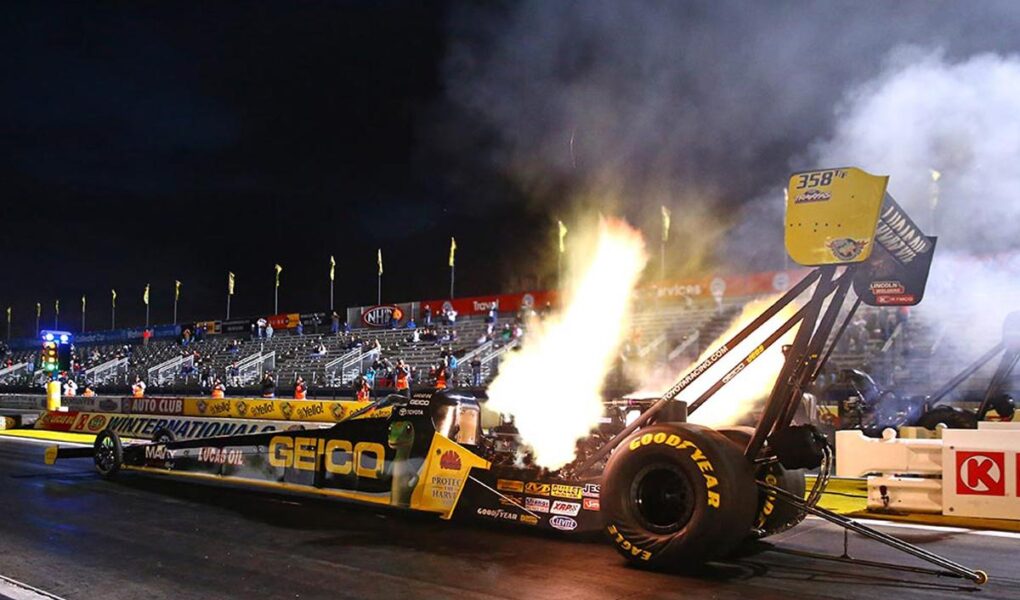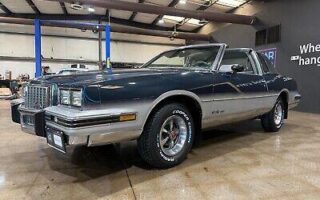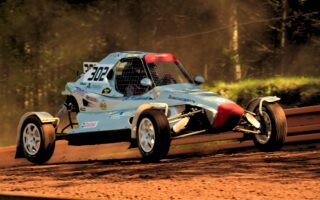Revving Up the Excitement: An Introduction to NHRA Dragsters
In the heart of the motorsport universe, where speed meets engineering prowess, NHRA dragsters stand as the epitome of raw power and adrenaline-fueled competition. With their sleek designs and heart-pounding acceleration, these machines transform ordinary tracks into arenas of spectacle, drawing in racing enthusiasts and curious spectators alike. The National Hot Rod Association (NHRA) has cultivated a culture that celebrates precision, agility, and sheer velocity, bringing countless hours of thrilling entertainment to fans around the world. In this article, we will delve into the unique world of NHRA drag racing, exploring the intricacies of dragster design, the dynamics of competition, and the passionate community that fuels this fast-paced sport. Buckle up as we embark on a journey through the exhilarating landscape of NHRA drag racing.
Table of Contents
- Understanding the Mechanics of NHRA Dragsters for Optimal Performance
- Exploring Safety Innovations in NHRA Drag Racing
- Enhancing Driver Skill: Techniques for NHRA Dragster Competitors
- The Future of NHRA Drag Racing: Trends and Technology Innovations
- Q&A
- Final Thoughts
Understanding the Mechanics of NHRA Dragsters for Optimal Performance
One of the essential aspects of NHRA dragsters is their powerful engines, which are specifically engineered to deliver breathtaking acceleration. These engines can exceed 10,000 horsepower, primarily through a combination of supercharging, nitromethane fuel, and expert tuning. To achieve optimal performance, each component must work in harmony, from the crankshaft to the tires. Here are some key elements that contribute to a dragster’s staggering power output:
- Superchargers: Compress the air entering the engine to create a denser fuel-air mixture.
- Fuel Mixtures: Nitromethane is preferred for its explosive energy potential.
- Weight Distribution: Achieving the right balance fosters better traction and acceleration.
The dragster’s chassis and suspension also play significant roles in its speed capabilities. These vehicles must be designed to withstand tremendous forces while maintaining stability during rapid acceleration. Engineers utilize advanced materials and aerodynamics to enhance performance. Below are vital components used in NHRA dragsters:
| Component | Purpose |
|---|---|
| Chassis | Provides structural integrity and support for the engine. |
| Suspension System | Ensures maximum traction by minimizing wheel hop. |
| Tires | Engineered for optimal grip during the launch phase. |
Exploring Safety Innovations in NHRA Drag Racing
In the high-octane world of NHRA drag racing, safety has always been a paramount concern. The evolution of vehicle design has led to groundbreaking innovations that significantly enhance driver protection. Advanced materials, such as carbon fiber and titanium, are now utilized in the construction of dragsters, providing a lightweight yet immensely strong framework. Additionally, the incorporation of crush zones and luxury safety features, including enhanced roll cages and fire suppression systems, has transformed the way safety is implemented, ensuring that drivers can withstand the extreme forces experienced during high-speed runs.
Moreover, the NHRA has introduced a suite of cutting-edge technologies aimed at accident prevention and racer protection. Digital telemetry systems monitor a range of parameters, including engine health and tire performance, allowing for real-time adjustments that mitigate risk. Furthermore, the introduction of safety equipment like the Hans device and specialized racing suits with fire-retardant materials has become standard. The commitment to safety in NHRA drag racing is not merely a response to incidents but a proactive approach that sets a benchmark across motorsports. Here’s a brief overview of some key safety innovations:
| Innovation | Description |
|---|---|
| Carbon Fiber Bodies | Lightweight and strong, enhances crash protection. |
| Roll Cages | Reinforced structures protecting drivers during impacts. |
| Fire Suppression Systems | Automatically extinguish flames to reduce injury risk. |
| Hans Device | Restrains head movement during accidents, preventing injuries. |
Enhancing Driver Skill: Techniques for NHRA Dragster Competitors
Mastering the art of drag racing requires more than just brute power; it demands a refined skill set. Competitors should focus on honing their reaction times, as the moment the lights turn green can often determine victory or defeat. Practice with a reaction timer can greatly enhance your ability to launch effectively. Additionally, understanding the complexity of staging—how to position your car just right—is crucial. The two-step launch control technique can fine-tune engine RPMs at launch, optimizing power output and minimizing wheel spin.
Another vital aspect is the mental preparation before each race. Visualization techniques can foster a winning mindset; picture yourself executing the perfect run from start to finish. Develop a consistent pre-race routine that calms your nerves while keeping you focused. Strive to analyze data after every run, reviewing telemetry to identify areas for improvement. Below is a comparison of vital skills that contribute to better performance:
| Skill | Importance |
|---|---|
| Reaction Time | Critical for gaining an early lead. |
| Staging Precision | Ensures optimal launch conditions. |
| Vehicle Control | Prevents loss of traction and improves speed. |
| Mental Focus | Aids in decision-making during the race. |
The Future of NHRA Drag Racing: Trends and Technology Innovations
The landscape of drag racing is rapidly evolving, driven by cutting-edge technologies and a renewed focus on sustainability. As NHRA continues to enhance the thrill of the sport, we can expect to see the rise of electric drag racing vehicles, which not only promise reduced environmental impact but also offer incredible acceleration and performance. In addition to electrification, advancements in data analytics allow teams to optimize their strategies, analyzing real-time telemetry data for better decision-making on the track. These trends indicate a significant shift in how teams will prepare for races, as computer simulations and predictive technologies become commonplace.
Moreover, the integration of smart technology such as augmented reality (AR) is poised to change the fan experience at events. Spectators can anticipate engaging with AR applications that enhance their understanding of the races by providing insights into vehicle performance and driver strategies. The implementation of safety innovations cannot be overlooked either, with ongoing developments in materials science leading to stronger and lighter dragster components. This fusion of safety, performance, and fan engagement creates an exhilarating environment that not only attracts a new generation of fans but also honors the sport’s storied heritage.
Q&A
Q&A: All About NHRA Dragsters
Q: What is an NHRA dragster?
A: An NHRA dragster is a specialized race car designed for the National Hot Rod Association (NHRA) drag racing events. These vehicles are engineered for maximum speed and performance, typically featuring powerful engines, lightweight frames, and distinctive aerodynamic designs that allow them to cover a quarter-mile track in mere seconds.
Q: What differentiates a dragster from other types of race cars?
A: Dragsters are distinct due to their construction and purpose. Unlike other race cars that may be built for endurance or road racing, dragsters are specifically optimized for straight-line speed over a short distance. They use a rear-engine layout, which provides better weight distribution and traction during acceleration.
Q: How do NHRA dragsters achieve such incredible speeds?
A: These dragsters achieve breathtaking speeds—often exceeding 330 MPH—due to a combination of powerful supercharged engines, high-octane fuel, and advanced technology. The engineering focuses on reducing weight and maximizing traction, utilizing specialized tires that can withstand extreme forces and grip the track efficiently.
Q: What are the different classes of NHRA dragsters?
A: NHRA drag racing features several classes, each with its own set of rules and specifications. Some popular classes include Top Fuel, which features the fastest and most powerful machines; Funny Car, where cars resemble production vehicles but are heavily modified for racing; and Pro Stock, focused on traditional-style sedans with strict engine specifications.
Q: What is the role of safety measures in NHRA drag racing?
A: Safety in NHRA drag racing is paramount. Vehicles are equipped with advanced safety features such as roll cages, fire suits for drivers, and parachutes for rapid deceleration. The NHRA continuously implements stringent safety protocols and conducts rigorous inspections to ensure that all racers adhere to the highest standards of safety, reflecting the sport’s commitment to protecting its participants.
Q: Can anyone participate in NHRA drag racing?
A: While anyone can aspire to participate in NHRA drag racing, entry-level competitors often start in local events to gain experience. Those looking to compete professionally must obtain licensing, which involves completing specific training and proving their proficiency in handling high-performance vehicles.
Q: How do NHRA drag races work?
A: NHRA drag races involve head-to-head competition on a quarter-mile track. Two cars launch simultaneously and race to the finish line, with the winner determined by who crosses first. Races are structured in a tournament format, where drivers compete in multiple rounds until a champion is crowned at each event.
Q: What is the significance of NHRA drag racing in motorsports?
A: NHRA drag racing holds a unique place in the motorsports world as one of the most thrilling and accessible forms of racing. It has a rich history dating back to the 1950s and has cultivated a passionate fan base. The NHRA has played a key role in advancing automotive technology and safety, influencing various aspects of the automotive industry beyond the track.
Q: Are there any famous NHRA drag racers?
A: Yes, many legendary figures have made their mark in NHRA history. Notable racers include Don Garlits, often referred to as the “Father of Drag Racing,” and Shirley Muldowney, the first woman to obtain a license to drive a top-fuel dragster. Their contributions have helped shape the sport and inspire countless fans and future racers.
Q: How can fans get involved with NHRA drag racing?
A: Fans can immerse themselves in the NHRA experience by attending events, joining fan clubs, and participating in activities like pit tours and autograph sessions with drivers. Many enthusiasts also choose to support local drag strips and events, becoming part of the vibrant drag racing community.
Final Thoughts
As we throttle down from the adrenaline-fueled journey through the world of NHRA dragsters, we’re left with a profound appreciation for the sheer engineering prowess and skill that define this high-octane sport. From the roar of the engines to the exhilarating scent of burning rubber, each race encapsulates a unique blend of tradition and innovation. Whether you’re a seasoned fan or a curious newcomer, the NHRA community welcomes all with open arms, celebrating the passion that drives these remarkable machines. With every shift, every burn-out, and every nail-biting finish, the spirit of competition ignites our imagination, reminding us that in drag racing, it’s not just about the speed—it’s about the stories behind the wheels. So, buckle up and stay tuned; the NHRA drag racing saga is far from over, and the next chapter promises to be nothing short of electrifying.



